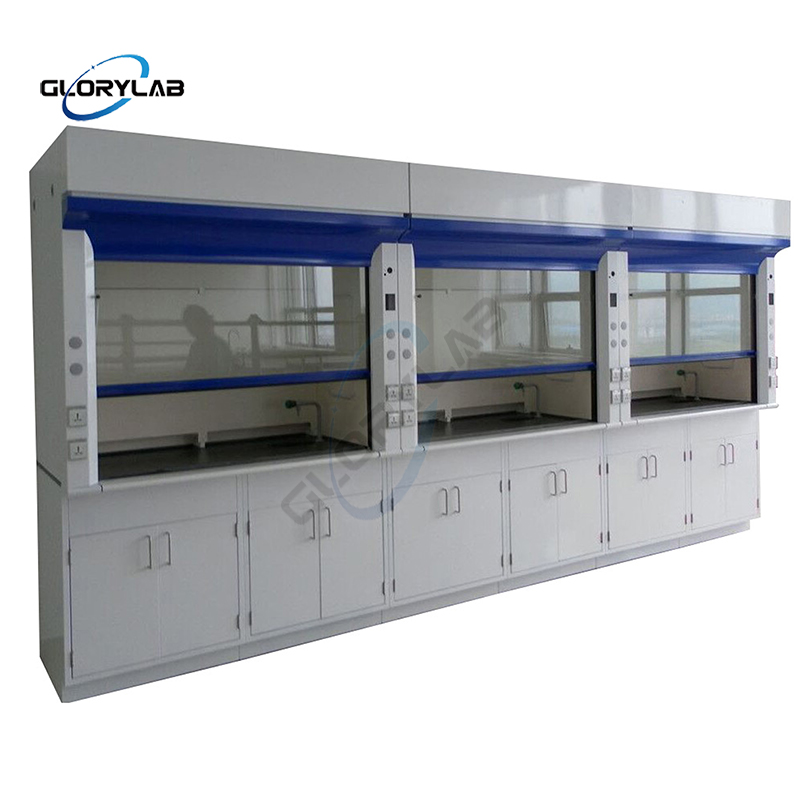The face velocity of lab fume hood
2015-08-04
Face Velocity of Laboratory Fume Hood
The standard range of face velocity for laboratory fume hoods is usually between 0.3 and 0.6 m/s. The specific face velocity value may vary depending on experimental requirements including the nature of harmful substances and other factors. For example, for more dangerous or volatile substances, higher surface face velocity may be required for effective handling; For routine experiments, lower surface face velocity may also meet the requirements.
Face velocity requirements for fume hoods under different standards
JB/T 6412-1999 “Exhaust Fume Cupboard”: This standard stipulates that the average surface face velocity at the operating port is 0.4~0.5 meters per second.
[JG/T 222-2007 “Laboratory Variable Air Volume Exhaust Cabinet”: The face face velocity of the variable air volume ventilation cabinet should be controlled between 0.3 m/s and 0.5 m/s when fully or partially opened. When there are special process requirements, the face face velocity can be determined by the process.
JG/T 385-2012 “Self purifying Exhaust Cabinets without Ducts”: This standard stipulates that the face velocity of the operating hole section of the operating type self purifying exhaust cabinet without ducts should be maintained between 0.4 m/s and 0.6 m/s.
[Chemical Process Design Manual]: For the minimum suction surface face velocity of ventilation lab fume hood, it is 0.3-0.4 m/s for those that are harmless to the human body but have pollutants, 0.4-0.5 m/s for those that are mildly or moderately hazardous or have hazardous substances, and 0.5-0.7 m/s for those that are extremely hazardous or have a small amount of radioactive harmful substances. The standard calculation is 0.5 m/s.
Factors affecting the face velocity of the laboratory fume cupboard.
The control of face velocity on the laboratory fume cabinet not only depends on standard regulations, but is also closely related to specific experimental requirements, types of harmful substances, and volatility. For example, for extremely hazardous or small amounts of radioactive hazardous materials, higher surface face velocity may be required to ensure safety. In addition, the design of lab fume hoods and the management regulations for experimental operations can also affect the selection and effectiveness of surface air velocity.


